favourite kitchens
Your favorite kitchens at a glance. Get inspired!
Your favorite kitchens at a glance. Get inspired!
However, you also need to choose the right style and design so that you’ll still love the look of your cabinets many years down the line. This article outlines the value that cleverly designed kitchen cabinets – such as pull-out larder units and corner cabinets – can bring to your kitchen. It also explains how to know which of the different types of design is right for you. Browse our site for inspirational ideas and find the perfect solution for your lifestyle!

Pull-out larder units, corner cupboards, base cabinets… When it comes to kitchen design, there are a multitude of solutions available, each with their own characteristics and functions. Choosing the right solution depends on your specific needs, the space available and your personal taste.

Base cabinets are tucked beneath the worktop and provide space for storing saucepans, frying pans, crockery and other kitchen items. These types of cabinet are available in a wide range of different sizes and designs.


These types of units are mounted on the wall above the worktop and provide extra space for storing crockery, glasses, spices and other compact items.
Tall units are usually bigger, providing more room than conventional base units. Some tall units even reach up to the ceiling. These units can be used for built-in appliances, such as an oven, microwave or fridge.


Corner cabinets make the most of the space in the corner, which is otherwise difficult to access. There are different types of corner cabinet, such as carousel cupboards and pull-out units. Further information about corner cabinets can be found below.


These cabinets consist of pull-out elements and are a practical solution for storing utensils, cutlery, crockery and other items.
Shelves are a wonderful alternative to cabinets with closed doors and can be used for storage, decorations or other items, as well as for lining up recipe books.

As the name suggests, glass-fronted cabinets have glass doors, which means that the contents of the cabinet are on display. They are ideal for showcasing crockery or glasses.
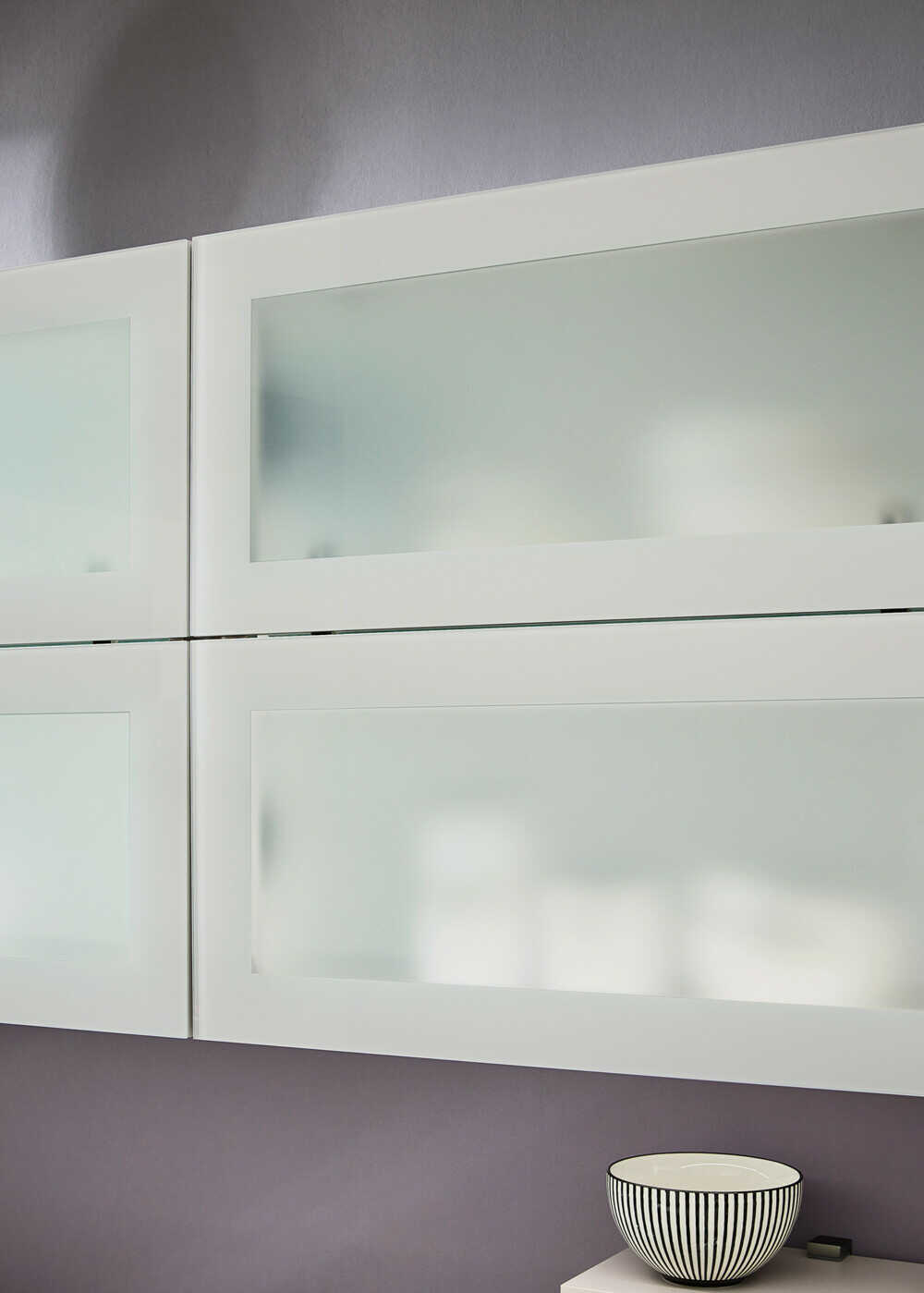

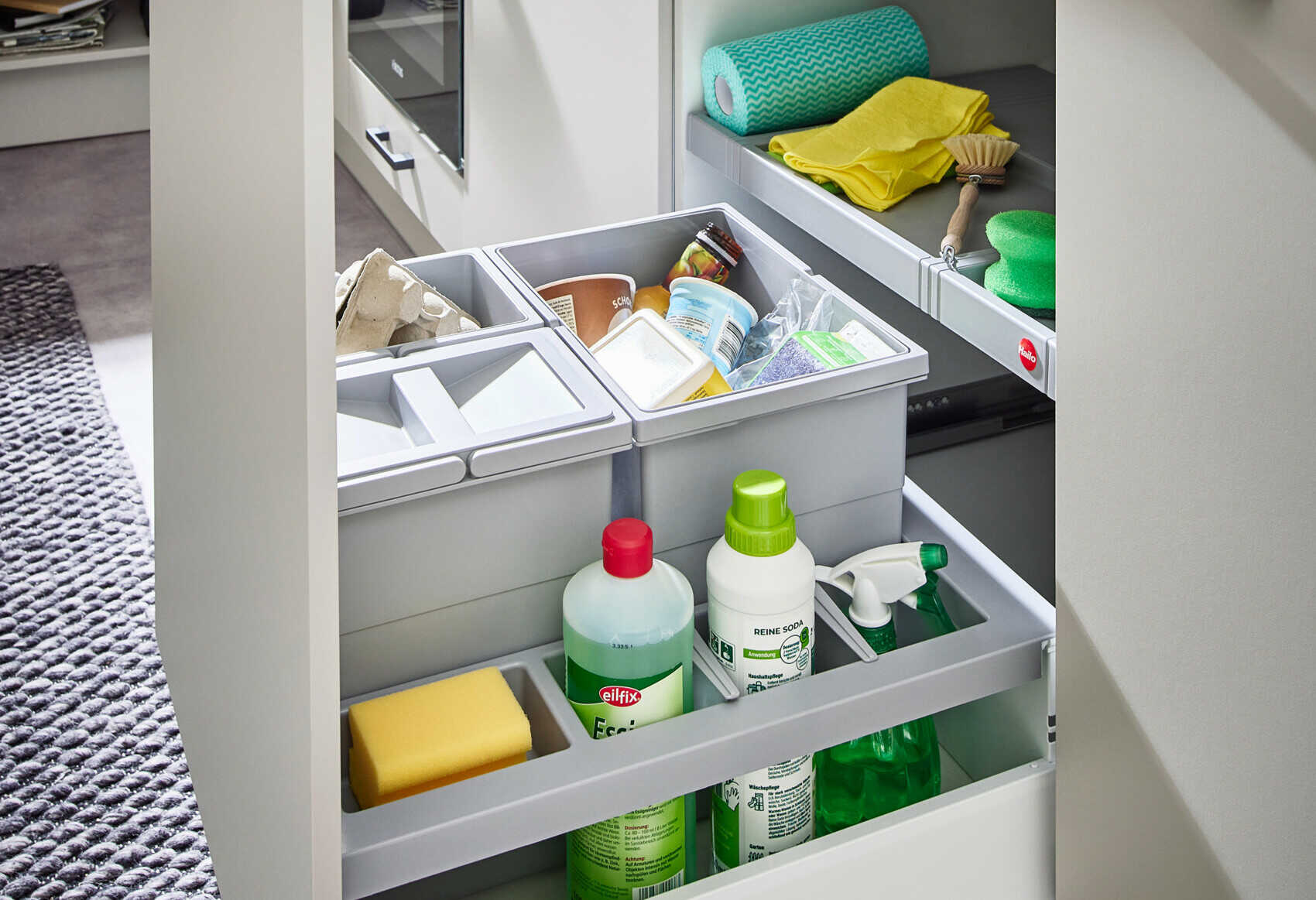
A sink cabinet is a special base unit underneath a sink. The cabinet provides enough space for plumbing and sink fittings, as well as storage space for cleaning equipment.
Having a cabinet beneath your gas or induction hob is a good way of creating extra storage space in your kitchen.


This type of base unit is specially designed to hold rubbish bins and recycling containers, keeping unsightly bins out of view. These units are often installed beneath the sink.


Large cupboards, specifically designed to store food and pantry items.
These cabinets are often used in kitchen islands and provide additional storage and worktop space.
A pull-out larder, also known as a pull-out pantry or pull-out cabinet, is a special type of kitchen cabinet designed to provide maximum storage space and easy access. It often features several narrow shelves or drawers that pull out automatically when the cabinet door is opened. The narrow shelves and drawers optimise the use of space, which is particularly useful in tight spots or difficult-to-reach areas. A pull-out larder is an efficient solution for organising and storing saucepans, frying pans, spices, food and other cooking equipment. Because the drawers or shelves slide back in when the door is shut, the pull-out larder takes up very little room.

Before your kitchen is installed, however, there are a number of important points to be considered. The actual design – including types and sizes of cabinet, and where they should go – is determined by multiple factors, including kitchen layout, your specific needs and your favourite style. Putting thought into these factors ensures that you will get the best use out of your cabinets and that they will be a perfect fit for the overall design of your kitchen.
The perfect height to install kitchen wall cabinets depends on a number of different factors, including the size of the kitchen, the height of those who will be using the kitchen most frequently, and the type of tasks that are going to be performed in the kitchen. However, there are some general guidelines that should be taken into account:
If you are going to be the main person using the kitchen, the cabinets should be at a convenient height for you to reach things inside easily. If the kitchen is going to be used by several people, bear in mind people’s different heights and their specific needs.
The height of the walls is a critical factor. If your walls are high and you need a lot of room, you can choose the tallest cupboards available to maximise the kitchen space. In the case of low ceilings, wall units with a lift-up door are a good option.
The height of the cabinets also has an impact on the overall aesthetics. Striking the correct balance between wall cabinets and base units can have a positive impact on the overall design of the kitchen.
Deciding which wall units to choose depends on multiple factors, including your personal preferences, your kitchen appliances and your personal style. Here are several different options, together with key points to consider:
These are the traditional types of cupboard door that open outwards. They are a versatile solution that leaves plenty of room in the cupboard.
The perfect option if you want to put your crockery or decorative accessories on display. They lend your kitchen an open, airy feeling.
These cabinet doors are made entirely out of glass, creating a modern, minimalistic effect. They are a particularly good choice if you have high-quality crockery or glasses that you want to put on show.
These doors open upwards and provide good access to the contents of the cupboard. They are perfect solutions when you want to save as much space as possible in your kitchen.
Cupboards with shutters have a door that rolls up and down. They are practical space savers, but you have to be careful not to overfill them as this could hinder the operation of the shutter.
These cupboards are specifically designed for the corners of your kitchen and therefore optimise a space that would otherwise be left unused. They are the perfect solutions to efficiently use space.
A wall-mounted shelf unit provides an open space that is useful for storing frequently used kitchen utensils or spices close at hand.
If you’d like to use a wall-mounted unit to store your microwave, choose a cabinet that has been specifically designed for this purpose to ensure that the microwave fits well and has sufficient ventilation.
If you want to integrate your extractor hood in a wall unit, you need to make sure that the cabinet is equipped for this and has the necessary ventilation.
Wall units with integrated LED lighting are a great solution for lighting up your worktop. Make sure that the lighting corresponds to your needs and kitchen lifestyle.
The space between the worktop and the wall units should be 565 mm so that the splashback can fit between the two.
Corners can often be difficult to access, which is why solutions for the corners of your kitchen need to be clever choices to maximise the use of this space. It is important to consider your specific needs and your cooking habits before deciding which corner solution to go for.
A carousel cupboard is a revolving kitchen cabinet with round shelves.
The name ‘LeMans’ refers to the famous racing track in France and is meant to reflect the curved movement of the cupboard’s pull-out shelves. Contrary to conventional corner solutions, which are accessed by opening the cupboard doors, the LeMans cupboard features an innovative pull-out shelf system that facilitates access to pots and pans.
Different kitchen cabinets go well with different styles of kitchen, because every design comes with its own aesthetics and characteristics. Here are some examples of successful combinations between the type of cabinet and style of kitchen. These recommendations are intended to provide inspiration, but you can also mix and match different styles and different elements to create a unique look. It is important to choose cabinets that coordinate with the other elements of the kitchen, such as the flooring, worktop, lighting and the colour of the walls, in order to achieve a harmonious overall design.

Sleek lines and minimalistic design characterise a modern kitchen. Flush-fitting, handle-free units with smooth cabinet doors and drawer fronts – either in matt or high-gloss – are perfect for this style of kitchen. Grey, white or black fronts can further emphasise a modern style, while white creates a timeless elegance.
Kitchen cabinets with rustic details are the perfect choice for farmhouse kitchens. Smooth or lightly textured fronts made from solid wood or imitation are options to consider here, while glass-fronted cabinets can lend kitchens an additional touch of charm.


Metallic handles add authenticity to industrial-style kitchens. Open shelving or kitchen cabinets with sleek lines and an unfinished, urban look are characteristic of this type of kitchen design.
Pale, light colours are trademarks of the Scandinavian style. White or pale wood tones can be used to emphasise authenticity. Wall cabinets and base units with simple, minimalistic details, as well as open shelving, are all typically Nordic.
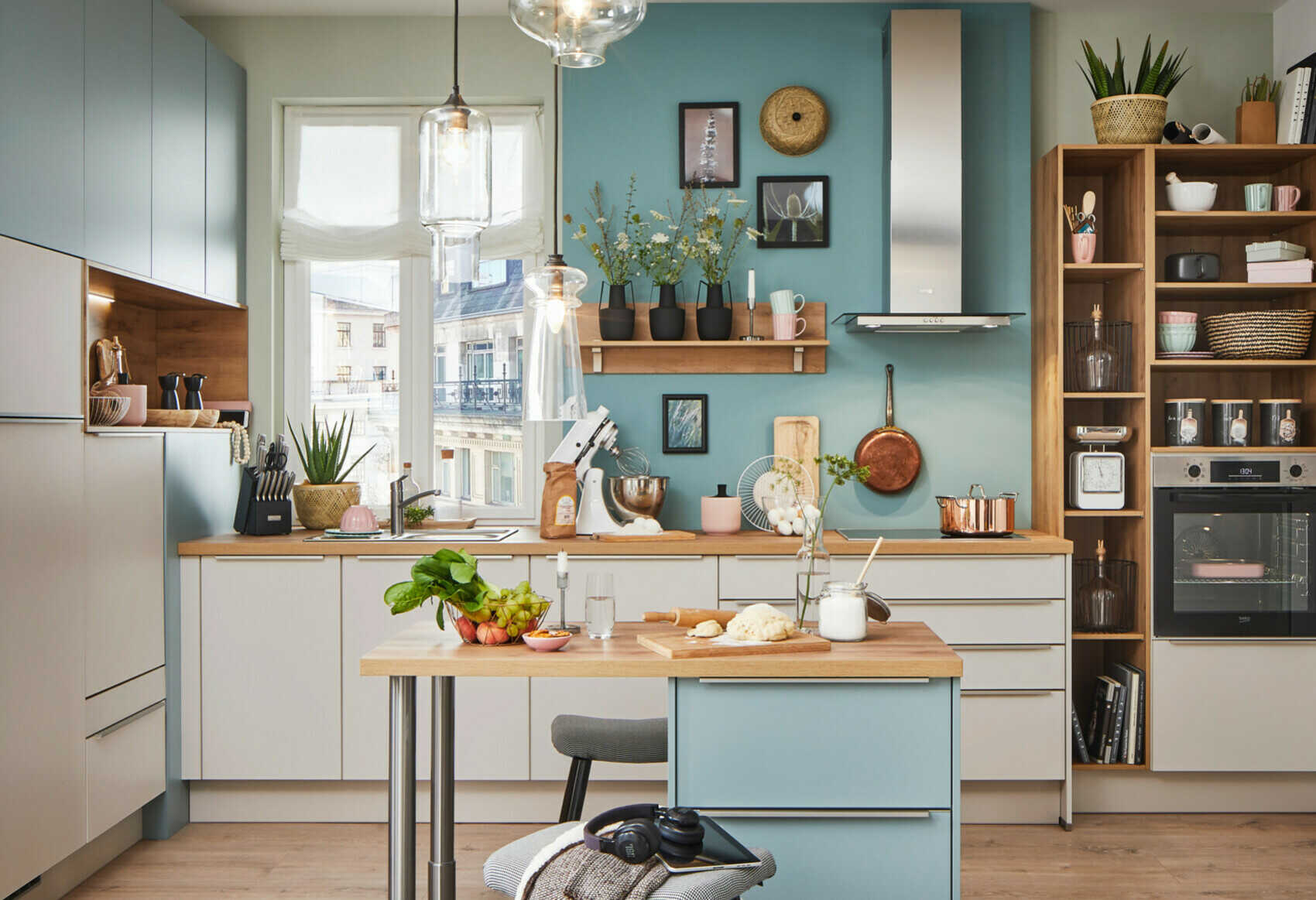

Wooden cabinet doors and drawer fronts in warm colours are a good choice for Mediterranean vibes. Ornate or textured details can be used to support the rustic aesthetics. Glass-fronted cabinets with cast iron fittings give off an elegant, Mediterranean feeling.
Wooden cabinet fronts with elaborate designs, shaker doors and traditional handles all go well in a classic kitchen. Cream, white or pastel-coloured kitchen cabinets accentuate the traditional style.
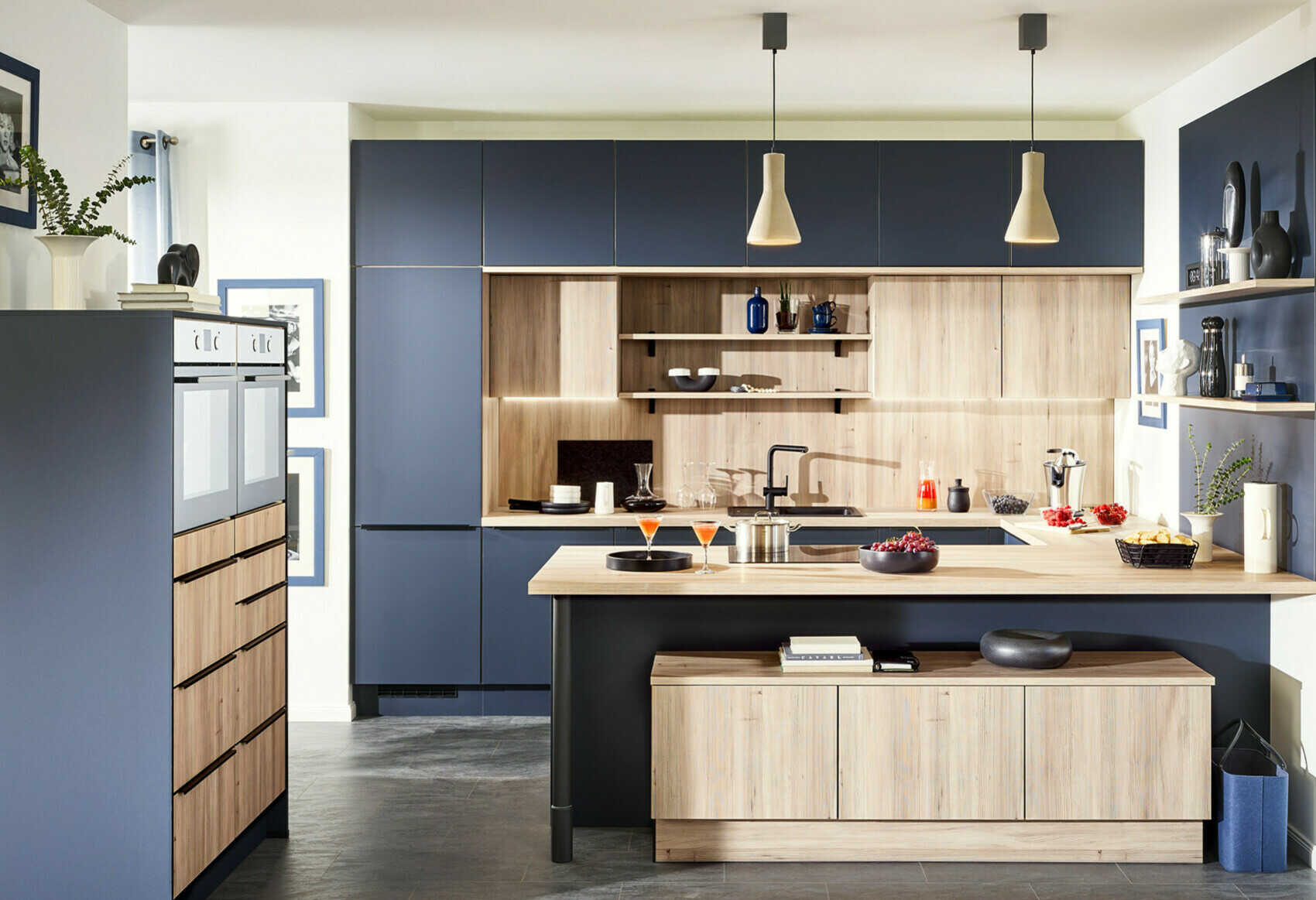
Choosing the colour of your kitchen cabinets depends on a number of factors, including personal taste, kitchen design, size of the kitchen, lighting and the atmosphere you are wishing to create.
White, grey, beige and cream are all versatile and timelessly beautiful. White not only makes a kitchen look particularly clean and elegant, but it also combines well with other colours and materials.
Natural wood tones create a warm, inviting atmosphere. Wood comes in a variety of different shades and textures, allowing you to create a rustic, modern or classic atmosphere.
Cabinet doors and drawer fronts in black, dark grey or dark blue create a modern, sophisticated look. They can make a kitchen look smaller, however, which is why it is important to ensure that there is enough light.
Accentuate certain parts of the kitchen with the clever use of colour. For example, you could combine coloured cabinet doors with neutral, white cupboards to create intriguing visual dynamics.
Combining light and dark shades, or using different colours entirely, can create an exciting contrast.
Cabinets with a high-gloss finish lend kitchen furniture a radiant, modern look. They reflect light and make the kitchen look more spacious.
Soft pastel shades such as Pastel Blue, Fjord Green and Antique Rose create a happy, friendly atmosphere.
You also need to take your specific style and preferences into account when choosing a colour. If you have a penchant for bolder colours, such as vibrant reds, bright yellows, gold and bronze you can use these to add a unique personal touch to your kitchen.
Don’t forget that the colours of the cabinets need to be coordinated with other elements in the kitchen, such as the colours of the walls, worktops, flooring and appliances. It can be a good idea to use colour samples or consult a professional designer to make sure that your chosen colours go together perfectly and create the atmosphere that you have in mind.
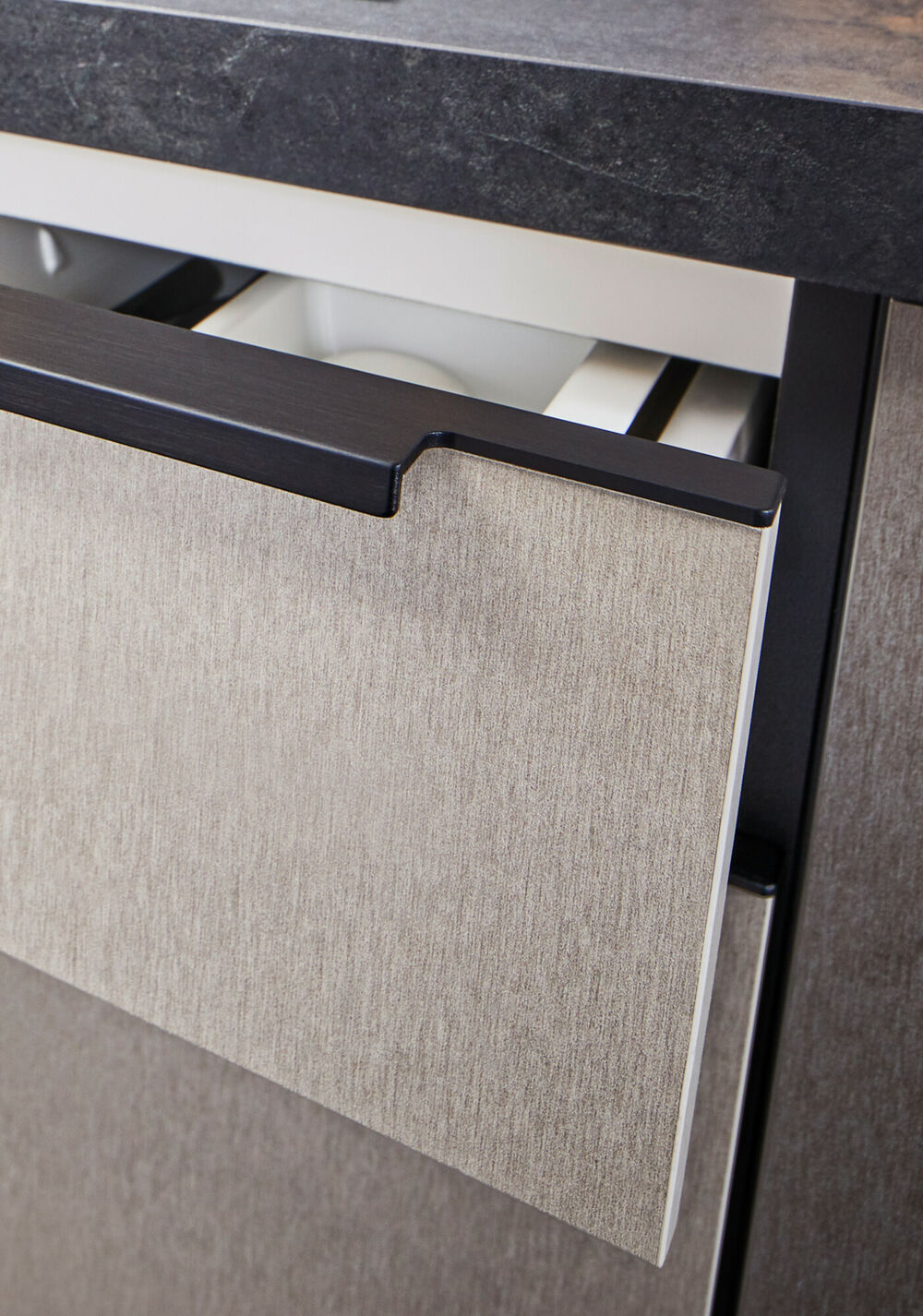
Handles
Kitchens with handles are timelessly traditional, while handle-free kitchens convey a modern, minimalistic style. What will yours be?

Kitchen
layouts
Check out our portfolio of different layouts for some inspirational ideas and find the perfect design for your dream kitchen.

Worktops
Choose your dream worktop – one that looks the part and also lives up to the demands of your own unique lifestyle.
Plan your kitchen now. Enter your zip code to find a dealer near you.